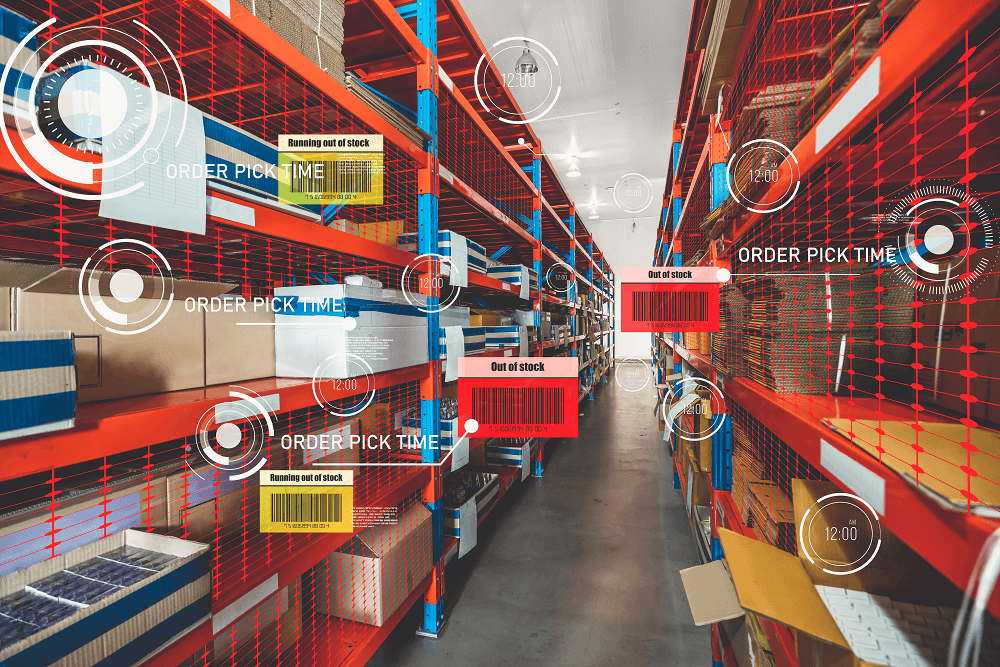Divisions
Not Finding What You're Looking For?
Head over to our contact page and tell us what you’re looking for and we’ll handle the rest!
Head over to our contact page and tell us what you’re looking for and we’ll handle the rest!

If you’re working with a warehouse, then the question of efficiency is always on your mind. An inefficient warehouse is expensive; blocked aisles, lost inventory, and low productivity are the hallmarks of ineffective use of warehouse space. Each has a significant negative impact on your bottom line.
But here’s the thing: chasing maximum warehouse efficiency is just that – a chase, never a destination. Warehousing needs are never stagnant, which means you’ll never arrive at a perfect solution. Instead, your best strategy is to strive to make continuous improvements and remain flexible so you can respond to changing needs as they arise.
Here are three primary ways successful warehouse managers think about their spaces that are proven to improve overall efficiency and flexibility.
You’ll find dozens of formulas and ideas for organizing your inventory. Ultimately, the “right” answer will strike a precarious balance between fitting everything in and providing labor-saving access. If you pack stuff in tightly, your employees will have to work harder to complete their tasks, which is not your goal. Conversely, if you set things up with only your employees in mind, you may find yourself short on space.
While there’s no one-size-fits-all solution, the following “rules” can serve as a guide:
Think of this as an application of the old 80-20 rule. Here’s an example: Are 80% of the picking efforts of your crew dedicated to the same five items? If that’s the case, you can significantly improve your efficiency by storing those five items together in the most convenient location possible.
But randomness comes at a high cost. For anyone to be able to find anything, you have to dedicate significant resources to tracking inventory and maintaining a record of where everything is located. Making it work is possible, but it’s a lot of work.
Having a fixed, defined system will waste some space, but your operations will be more efficient.
Your warehouse consists of horizontal and vertical space; an efficient warehouse makes good use of both.
Planning an effective warehouse organization schema is complicated, so it’s good news that technology can help.

Managing your warehouse well is a big job, and Indoff is here to help. Find a local Indoff representative today to help you make the most out of your warehouse space. Your Indoff partner is here to assist with all of it, including the following:
Making the most efficient use of your warehouse in terms of both space utilization and productivity is an ongoing endeavor with the potential for big payoffs on your bottom line. With a solid strategy in place and your Indoff rep, you can make continuous improvements, stay flexible, and manage your inventory better than ever before.
Courtney joined Indoff in 2010. She brings years of experience in project management and tech solutions and is responsible for supporting our Partners’ sales efforts.
Phone: (314) 997-1122 ext. 1291
courtney.brazell@indoff.com
Josh joined Indoff in 2013 as part of the acquisition of Allied Appliance and was paramount to Indoff’s acquisition of Absocold, a manufacturer of refrigerators and microwaves, in 2017. In 2025, Josh was promoted to President of Indoff, where he collaborates closely with Indoff’s Partners and Marketing department to develop and implement strategies that enhance the Indoff brand. Josh’s leadership and industry knowledge are instrumental in ensuring Indoff remains a leading provider of business solutions nationwide.
Phone: (314) 997-1122 ext. 1107
josh.long@indoff.com
Jim joined Indoff in 1988 after spending 5 years at Ernst & Young, where he specialized in audit and accounting for privately-held businesses. Jim is responsible for the day-to-day management of Indoff.
Phone: (314) 997-1122 ext. 1203
jim.malkus@indoff.com
John’s background includes the start up and acquisition of several successful business ventures, and he provides strategic planning and overall corporate governance.
Phone: (314) 997-1122 ext. 1201
john.ross@indoff.com